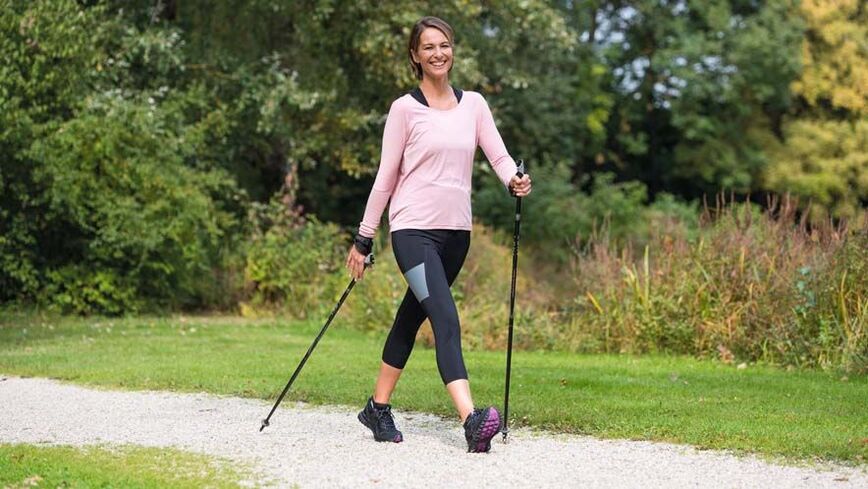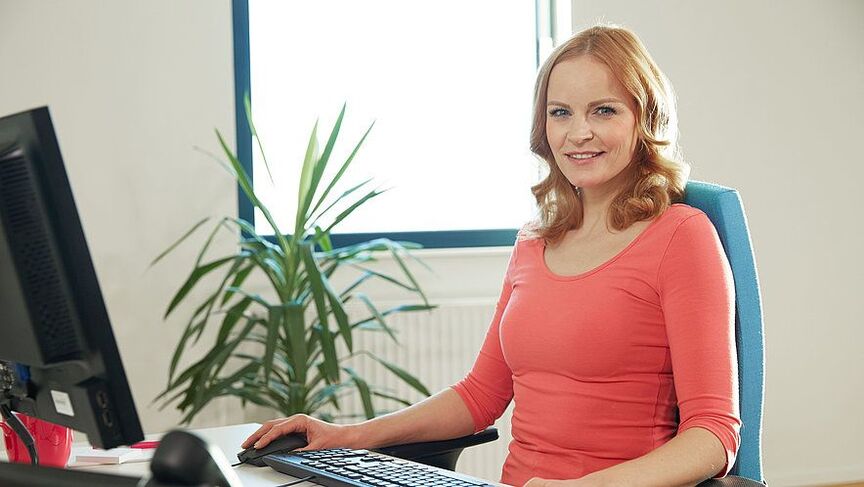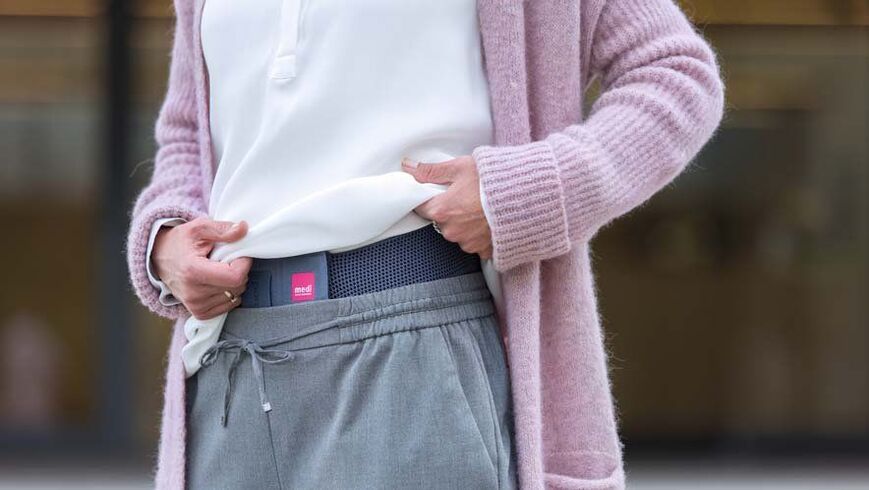Back pain is one of the most common illnesses affecting people of working age, the elderly and senile. The human spine bears almost the entire weight of a person. It consists of 33-34 vertebrae connected by intervertebral discs. Thanks to this connection, the vertebrae can move relative to each other. The sacrum and tailbone are special parts of the spine. The sacrum is made up of five fused vertebrae, and the tailbone is a rudimentary part of the spine that does not provide support.
Pain can occur in one or all three parts of the spine. The most common pain is in the cervical, thoracic and lumbar spine. Pain can be caused by diseases and injuries to the intervertebral discs (protruding discs, herniated discs) and intervertebral joints (arthrosis of the facet joints) or other diseases. The number of people with back pain has increased dramatically in recent years and decades, making this complaint the most common in the world.
Types of back pain
Acute back pain lasts up to six weeks. If it lasts up to 12 weeks it is called subacute. Pain that persists after 12 weeks is known as chronic pain.
Depending on the definition of certain causes of pain, there are:
- unspecific back pain;
- special back pain.
Specific back pain
If the exact cause of the pain is known, one speaks of specific back pain.
Examples of specific pain are trauma, disc lesions, inflammation of the intervertebral joints (facet arthrosis).
Nonspecific back pain
In some cases, back pain is classified as unspecific because the exact cause cannot be located.
Nonspecific back pain can occur with poor posture or lack of physical activity.
Symptoms and ailments
Almost everyone has already experienced "lumbago" or slight back pain. "Back again! " - a very common expression, as the back is stressed every day. Sitting for hours in the office, lounging in front of the computer, lifting and carrying heavy objects or working in position in the garden: Mild back pain is part of everyday life.
Back pain needs to be taken seriously. The reason for a visit to the doctor should be situations in which the pain does not go away for several days, if certain movements make the pain worse, or if the pain radiates into the limbs, especially if there is a feeling of numbness.
Sharp pain in the lower extremities is characteristic of compression of the spinal cord or its roots (for example, a herniated disc). The pain inherent with arthritic changes in the intervertebral joints is usually dull and local. The type and intensity of pain can vary widely from person to person. Only a doctor can prescribe the necessary examination and treatment appropriate to the situation based on complaints and symptoms. Depending on the situation, the doctor may prescribe physical therapy, therapeutic exercises, or surgery. During conservative treatment and during postoperative rehabilitation, it is very important to regularly perform therapeutic exercises, as they train the muscles, stabilize the spine and relieve pain.
The most common causes of back pain
The spine, or spine, is a complex structure made up of vertebrae, intervertebral discs, and ligaments. Pain occurs when the interaction of these structures is disturbed. Typical reasons are:

Stress causes back pain
In the absence of illness, predominantly sedentary activities and a lack of exercise in everyday life lead to chronic tension in the back muscles and pain in the spine.
The intervertebral discs act as biological shock absorbers and separate the vertebral bodies from one another. As the elasticity of the intervertebral disc decreases, it begins to bulge into the lumen of the spinal canal (called a prolapse) and its height decreases. The latter has a negative effect on the work of the intervertebral joints, as their biomechanics are disturbed.
If the protruding part of the intervertebral disc presses on the sensitive nerve fibers, various sensory disorders can occur in the innervation zone of the compressed nerve: pain, tingling, numbness, crawling, etc. If the motor nerve fibers responsible for muscle work are compressed, the function of the innervated muscle extends toParalysis disturbed.
Posture disorders and heavy lifting can lead to a disruption of the anatomical relationships of the spinal column structures. In some cases this leads to the so-called blockage of the intervertebral joints, usually accompanied by severe pain. When the intervertebral joints are blocked, the back muscles are in a painful, cramped state. So pain occurs not only in the blocked joint, but in the muscles. As a result, the physical activity of the patient is drastically reduced to the point of being unable to walk. When intervertebral joints are blocked, effective stabilization of the spine with medi orthoses helps to eliminate muscle spasms, localize pain and increase motor activity.
With age, our spine gradually changes its structure, which is described by the collective term "degenerative changes. " In this case, the word "degenerative" means irreversible changes due to aging. Despite the irreversibility of the process, the use of orthotics helps theTo alleviate and improve the patient's condition.
Degenerative changes in the intervertebral disc mean a violation of its elasticity, a decrease in height and a bulging of the lumen of the spinal canal. A decrease in the height of the intervertebral discs causes increased stress on the intervertebral joints (facets).
The position of the spine, including the lumbar spine, is stabilized by the work of the muscles. The back muscles, the abdominal muscles and the muscles of the lateral abdominal wall are involved in maintaining posture. The work of the muscles puts more even strain on the intervertebral discs and prevents excessive stretching of the ligamentous tendons. Any pain syndromes have a negative effect on muscle function, which can lead to local hypertension or, conversely, local weakness. This affects the stabilization of the spine. This, in turn, provokes an increase in the hypertension of some muscles, i. e. H. A pathological vicious circle develops.
Medical gymnastics will help break the pathological circle, which will allow you to restore the symmetry of the tone of the muscles of the trunk.
The cause of back pain cannot only be localized in the trunk. For example, abnormal gait biomechanics can also cause back pain. This is mainly due to the loss of the cushioning function of the foot in the event of certain deformations. Another reason may be the difference in the length of the limbs, which exceeds normal values.
The good news: in many cases, back pain disappears after a few weeks. Non-specific pain is successfully treated with the help of mobilization techniques (manual therapy) and medication. Exercise therapy exercises are very effective for such pain.
prophylaxis
Each of us can relieve our back and prevent pain.

Exercises that are good for your back.
There are strength training exercises that you can easily incorporate into your everyday life. This complex was developed in collaboration with a specialist in physiotherapy exercises.
- Regular Exercise: Three 45-minute sessions per week will improve your wellbeing, activate the immune system, and help maintain muscle tone. Swimming and walking are ideal back sports.
- Balanced diet: The right diet is the prevention of obesity, which puts additional strain on the back.
- Lifting Weights Properly: When lifting weights, you need to crouch and lift the load by straightening your legs, not your back muscles.
- Carrying weights correctly: Carry heavy objects as close to your body as possible. Do not carry heavy things in one hand.
- Be physically active: Sedentary workers should take every opportunity to increase their physical activity, e. g.
Ergonomic workplace

Back pain is common in the workplace. Sitting in the wrong position for long periods of time can lead to chronic muscle fatigue and subsequent pain. Back pain is also often caused by work that involves frequent bending and lifting.
Back pain treatment
There are many treatment options for back pain. First, the attending physician chooses between conservative and surgical treatment. The latter is used when conservative treatment is ineffective and in a number of other cases.

Physiotherapy and massage
Complexes of remedial gymnastics and special exercises for the back should be carried out under the supervision of a doctor or physical therapy teacher until you have mastered the technique of performing each exercise. Such exercise sets are developed to train the strength of the core muscles. The doctor selects the exercises that are most suitable for the patient. Massage and physical therapy can be prescribed to reduce the intensity of the pain.
Medication
Drug therapy is prescribed to relieve pain and inflammation in the acute phase. Taking pain medication helps eliminate the uncomfortable protective position that the patient takes for pain relief. Medicines should only be taken as directed by a doctor.
Back exercises
Strong core muscles protect the spine from stress, reduce the likelihood of cramps and pain. To prevent back pain, you should exercise regularly to train your back muscles. Swimming or walking is also helpful.
The exercise set combines strength training and stretching exercises and is designed for 20 minutes. The optimal training frequency is 2-3 times a week. Important: Consult your doctor before exercising.
Orthopedic products for the spine
Medical orthotics and orthotics for the spine are used to treat pain and muscle spasms. Modern bandages and corsets effectively combat pain and increase physical activity. Depending on the diagnosis, devices with more or less potential to stabilize the lumbar spine are used.
Lumbar orthoses and corsets with a higher height and stiffer stabilizing elements stabilize and support the spine better in the desired position. The ability to move painlessly and participate in social life removes the apparent bulkiness of even the stiffest of corsets.
Stylish orthosis - a practical guide

Can a spinal brace be fashionable and stylish? You will find the answer in our brochure. Learn how to take care of your health while dressing appropriately.

Companies manufacture a wide variety of orthopedic devices for the treatment of a wide variety of diseases. Hundreds of thousands of people around the world appreciate the high effectiveness of products used to treat back pain. At the same time, patients point out the high level of comfort and durability of the products. Thanks to the special design, all lumbar orthoses are easy to put on. A design solution provides additional comfort in the sitting position - a special pattern in the area of the groin folds.
Stabilizing the lumbar spine with orthopedic products from medi is not accompanied by muscle weakness, let alone atrophy. As mentioned earlier, the ability to move painlessly increases the patient's physical activity. In addition, orthopedic support aims to eliminate excessive and / or painful mobility, rather than immobilization, which is the reason for the functional inactivity of muscles and their weakening.
























